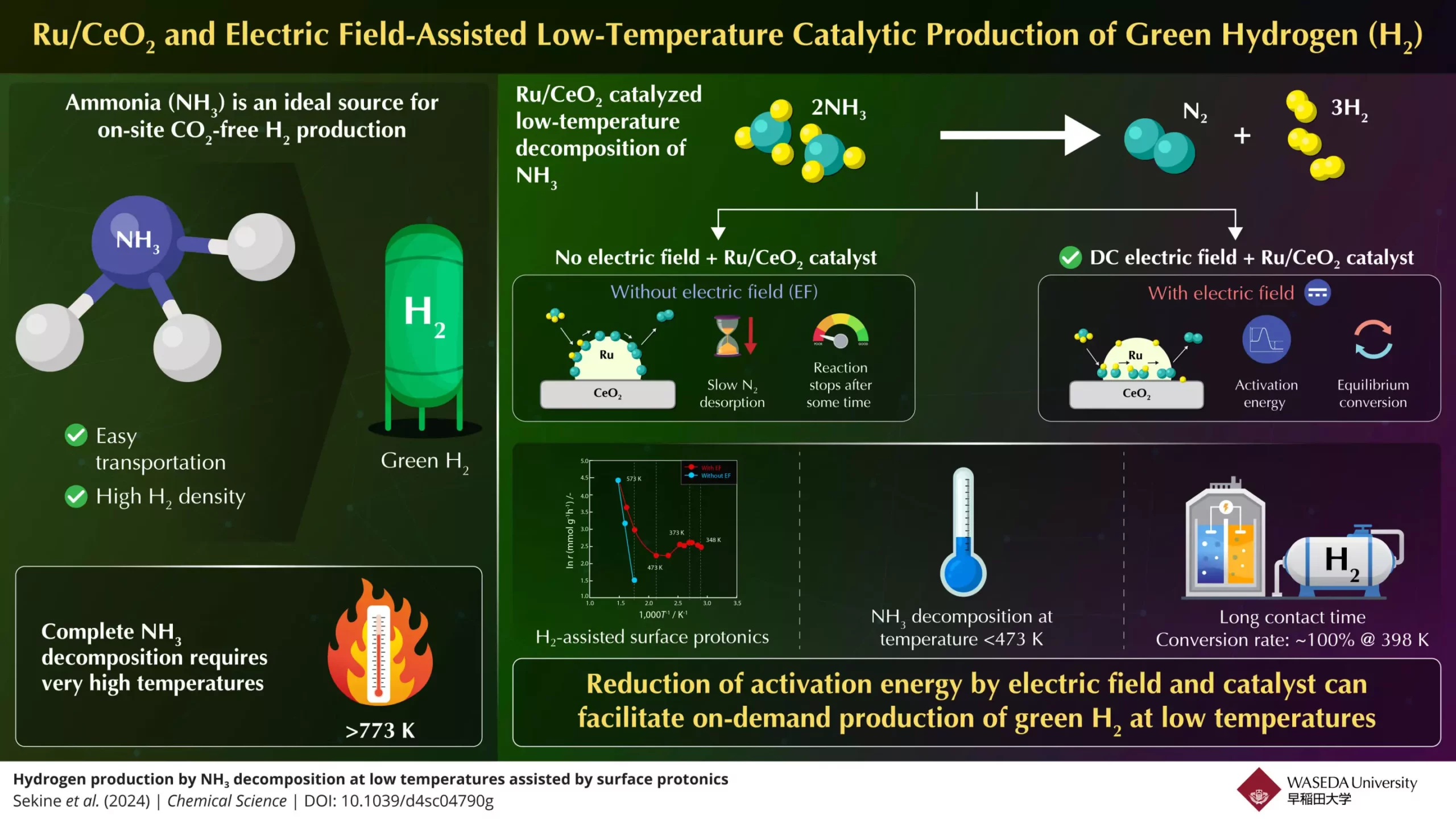In the quest for sustainable energy solutions, hydrogen gas has emerged as a front-runner. Renowned for its high energy density and absence of carbon emissions, hydrogen holds immense potential to shape a green energy future. Despite being the most abundant element in the universe, its practical application is hindered by the fact that hydrogen rarely exists freely. Instead, it is predominantly found in various chemical compounds like ammonia, metal hydrides, and other hydrogen-rich substances. Among these, ammonia (NH₃) has gained traction as a particularly promising hydrogen carrier due to its abundance, high hydrogen content—comprising approximately 17.6% of its mass—and favorable properties for liquefaction and transport.
However, a significant barrier to harnessing ammonia’s potential lies in the energy-intensive process required for its decomposition into hydrogen. Current methodologies necessitate extremely high temperatures—often exceeding 773 K (500°C)—making large-scale, practical applications of ammonia as a hydrogen source challenging. To address this issue, recent advancements in the field offer hopeful insights for researchers and industries alike.
A pioneering study conducted by Professor Yasushi Sekine and his dedicated team from Waseda University, along with partners from Yanmar Holdings, has introduced innovative strategies designed to enable ammonia decomposition at significantly lower temperatures. Their recent findings, detailed in a paper published in *Chemical Science* on August 27, 2024, highlight the potential of utilizing an electric field combined with a highly effective Ru/CeO₂ catalyst to enhance the efficiency of ammonia-to-hydrogen conversion.
Professor Sekine emphasizes the collaborative nature of this research project, stating its objective was to exploit ammonia’s capabilities for on-demand hydrogen generation. The team built upon existing thermal catalytic systems, whereby the reactions involving nitrogen and hydrogen require precise control over several variables. By identifying and optimizing the rate-limiting steps of nitrogen desorption and hydrogen bond dissociation, they were able to enhance performance significantly.
One of the most notable breakthroughs from this endeavor was the introduction of electric field-assisted catalytic reactions. This technique not only improved proton conduction at the surface of the catalyst but also lowered the activation energy required for the ammonia conversion process. As a result, the reaction could proceed effectively even at temperatures below 473 K.
In laboratory tests, the researchers recorded a remarkable 100% conversion rate at 398 K, a milestone that surpasses the traditional limits of ammonia decomposition. This phenomenal achievement could redefine the viability of ammonia as a green hydrogen source. The success stems from the electric field’s capacity to facilitate “surface protonics,” enhancing proton mobility on the catalyst’s surface, which in turn lowers the energy barrier for the conversion reaction.
The results of this research are promising not only for the field of hydrogen production but also for the broader goal of transitioning to clean energy solutions globally. With hydrogen seen as a fuel of the future due to its versatility and environmental benefits, making the process of generating hydrogen from ammonia more efficient opens numerous possibilities for industries seeking to reduce their carbon footprints.
The findings further elucidate the impact electric fields can have on catalytic processes, showcasing how seemingly unconventional methods can yield substantial improvements in chemical reactions. As hydrogen energy technology develops, this novel method presents an opportunity to foster wider acceptance of clean energy alternatives by simplifying the hydrogen production process.
The innovative developments presented by Sekine and his team signify a pivotal moment for the advancement of green hydrogen technology. Their groundbreaking approach to low-temperature ammonia decomposition holds the potential to revolutionize how hydrogen is produced and utilized, paving the way for efficient, sustainable solutions. As the world grapples with the urgent need for cleaner energy sources, efforts like these are critical in driving the transition to a low-carbon future, making clean, alternative fuels more accessible and practical than ever before.

